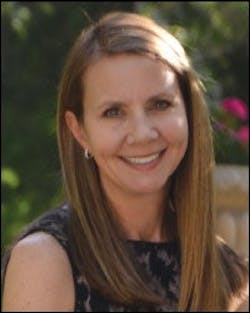Boswell spoke with FenderBender about the benefits of setting up a shop through DCR and how any shop can take on its philosophy and implement the kaizen mentality.
What is the advantage for a dealership to partner with DCR Systems?
Collision repair today is complex and rapidly changing. Vehicle complexity, environmental concerns, technician shortage, third-party oversight, and management challenges all make for a huge distraction from what the dealer’s core is: sales and service. Collision repair is what we do. In fact, we do it with a leading edge mentality addressing the challenges mentioned. Our fundamentally different approach to the business complements the dealer’s customer offerings and promotes retention.
DCR takes on all of the branding for the dealership. The dealer doesn’t have to worry about managing a collision repair shop; they simply receive all the benefits by outsourcing the operation to us. By partnering with DCR, the dealership is able to keep the customer in house and retain the customer without the potential headache of actually having to run a collision shop. Our commitment to manufacturer guidelines and our OE outer body guarantee make for a nice complement.
Can you explain what a kaizen event is?
Kaizen is a Japanese word for a business philosophy surrounding continuous and incremental improvement. It’s a thought process about servicing the customer, eliminating non-value activities (waste) that customers are not willing to pay for, and creating value for the customer through standard work, which yields predictable and dependable results. We have kaizen events where the entire team works together in the shop and assesses whether or not each step is value added. We look at movement, overproduction, waiting, inventory, corrections, material movement and other processing, which are all considered waste. We remove these non-value added steps to create a new, improved process.
What’s something that shops looking to implement a kaizen mentality should keep in mind?
It’s a process. It’s all about continuous improvement and using data to make process changes. No matter how good an owner thinks their shop is, there’s always room for improvement. Lose the status quo and embrace the thinking that there is always a better way.
Dealerships are not usually known for high-performing body shops. How does DCR work to improve this?
I think that the difference with DCR is this is what we do. We repair cars in a process-driven way versus how work has traditionally been done. We have a grueling process that goes through a directional flow line with strict standards and quality control points. It’s very strategic. We’re all about adherence to the OE guidelines. We add great customer communication and represent our dealer partner well. For example, looking at our recommended rate last month, 100 percent of our respondents said they would recommend us.
What’s something unique about a DCR shop?
We are truly process centered. All of our teams work together as one. Nobody owns a vehicle individually as an assignment at our shops. The vehicle flows through sequential steps with much defined quality and standard checks between each one of them. All of our team members are, in essence, operating expense, which means that we do not employ commission or flat-rate technicians. It is truly a team environment. We have a great platform for training future technicians because we are team based and are all aligned around the customer. We have completely tooled environments where tools are placed openly at the point-of-use in each area of the process. If a tech is working in one area and has to move to another area, those tools stay where they are. This is a huge incentive for attracting the younger generation of technicians. They don’t have that financial burden of having to purchase these tools. Our teams really encourage the sharing of skills and the training of others.
Why did you decide to start keeping all of the tools in a certain area of the shop?
In a lean environment, everything needs to be in its workspace. Time and movement are considered waste. If I’m in body repair, everything I need to do the necessary work should be at arm’s length. If a technician’s tools are in the back of the shop and he or she is looking for them, that’s wasted time and movement. This way, that isn’t a problem. Shadow boards with tools are at each workstation in our shops. That’s one reason for it.
Another reason is we want to make sure that our people have the right tools to repair the vehicle. We didn’t want to be dependent on people and what they could personally invest. We are a team and we want everyone to be able to use the right tools in the right situation.
Your company sets up collision repair shops within dealerships. Is this a trend that will continue in the industry?
We have six dealership partnerships today. We plan to grow and expand in our existing markets. I think dealerships partnering with companies like ours will continue to be a trend, especially with the wave of manufacturer certifications and the complexity of new vehicles. Consumers are continuing to become more aware and they’ll want to take their vehicles to shops with the necessary certifications, that adhere to manufacturer’s guidelines, and are properly equipped.
Due to your job, you’ve been inside of a lot of body shops. What are common mistakes that you see?
For the most part, it’s that there aren’t real processes in place. I notice team members or technicians running their own shops instead of looking at the system as a whole. That’s very inefficient. You can’t have a shop within a shop within a shop and expect a consistent product. Everyone has to have the same goal in mind. A lot of times there won’t be housekeeping in place. If I walk into a shop and it’s dirty and things are lying around, it means that there are not processes in place. That’s not a lean environment. The first thing that we do when we go into a shop is 5S it and clean it up. Everyone should be a part of housekeeping throughout the day. Whether or not people see simplifying their workplace as important is a true indication of whether or not everyone is on the same page.
What advice would you give to a shop that wants to implement DCR’s philosophy?
The upper management team has to be committed. Everyone has to be committed to improving existing processes. If everyone is not on board, it’s not going to be successful. If I did a kaizen event, we would observe what was truly happening and document it. That requires the whole team seeing what is happening and coming up with process improvements that make sense. You need to be open minded. You can’t just go in and say, “This is the process and we’re done.” You need to continuously look at it and make changes. Nothing is ever perfect the first time you do it. If you make a mistake, admit it and move forward.

